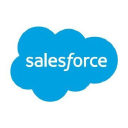This Couple Bought A Cleaning Equipment Business For $535K And Grew It To $8.5M/Year
Hello! Who are you and what business did you start?
My name is Frank Pedeflous and my wife Sandy and I bought a small business named Ultrasonic Blind Cleaning Systems twenty-five years ago. The business originally manufactured hard window covering cleaning equipment and sold it as a business opportunity to new start-ups and retailers selling window coverings.
Within six months, we changed the name of the company to Omegasonics and began creating equipment to address industrial cleaning using water-based detergents instead of environmentally toxic solvents. The Montreal Protocol, signed in 1987 by the international community of nations, essentially began eliminating several solvents used in industrial cleaning due to their ozone-depleting effects. Our industrial ultrasonic equipment utilizes high-frequency sound waves to clean parts with soap and water which is better for the environment.
We initially developed products selling to Indy race car teams, then expanded to motorcycle repair companies, the U.S. military, the 3D printing industry, aerospace, semiconductors, and the PPE market to help combat high...

Download the report and join our email newsletter packed with business ideas and money-making opportunities, backed by real-life case studies.

Download the report and join our email newsletter packed with business ideas and money-making opportunities, backed by real-life case studies.

Download the report and join our email newsletter packed with business ideas and money-making opportunities, backed by real-life case studies.

Download the report and join our email newsletter packed with business ideas and money-making opportunities, backed by real-life case studies.

Download the report and join our email newsletter packed with business ideas and money-making opportunities, backed by real-life case studies.

Download the report and join our email newsletter packed with business ideas and money-making opportunities, backed by real-life case studies.

Download the report and join our email newsletter packed with business ideas and money-making opportunities, backed by real-life case studies.

Download the report and join our email newsletter packed with business ideas and money-making opportunities, backed by real-life case studies.















